Industrial conveyors span a wide range of designs and configurations to suit specific purposes — from positioning delicate optical components for inspection to delivering automotive parts through an assembly line.
When designing a conveyor, one of the first considerations is the conveying media to be used, which depends on the size, shape, and weight of the product being handled and on the process requirements, such conveying distance and route, transport speed, and positioning accuracy. For assembly and automation applications, the most popular conveying media are belts, chains, flat-top chains, and powered rollers.
Of these media choices, belts are arguably the most versatile. They can be manufactured in virtually any width and can span long conveying distances, and they operate with lower noise and less required maintenance than chains or rollers. Belts and their mating rollers (or pulleys) are also available in many different materials and finishes to meet specific application requirements and environmental conditions.
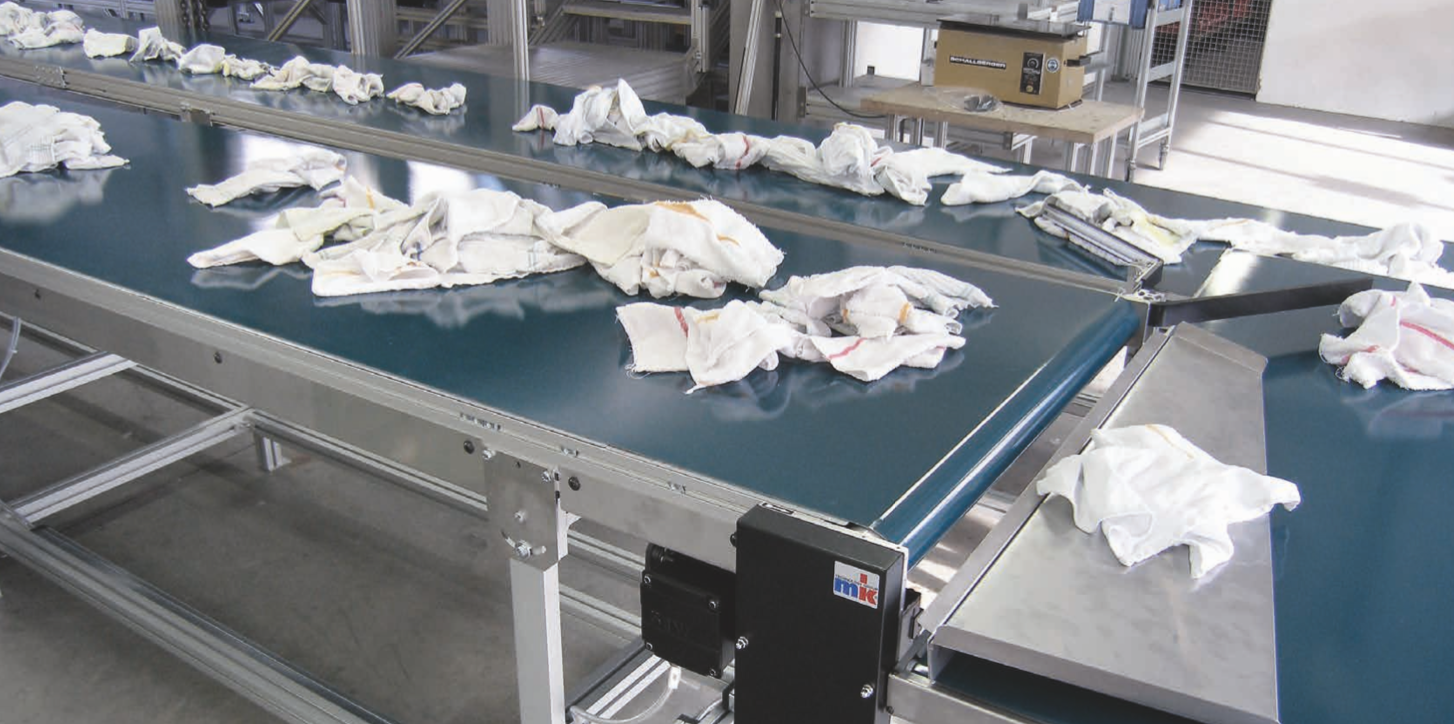
Image credit: mk North America
Traditional belt-driven conveyors use flat belts that rely on friction between the belt and rollers to transmit power. They also rely on friction between the belt surface and the product to hold the product at a specific location on the conveyor. This friction-based design is flexible and economical, but it leads to a potentially variable product positioning and orientation. Case in point: the belt can slip on its drive rollers if working conditions exceed rated load, speed, or acceleration, and the product can move, or slip, on the belt during starts and stops or any time there’s a change in acceleration.
When accurate product location and orientation is required, timing belt conveyors are typically the best choice.
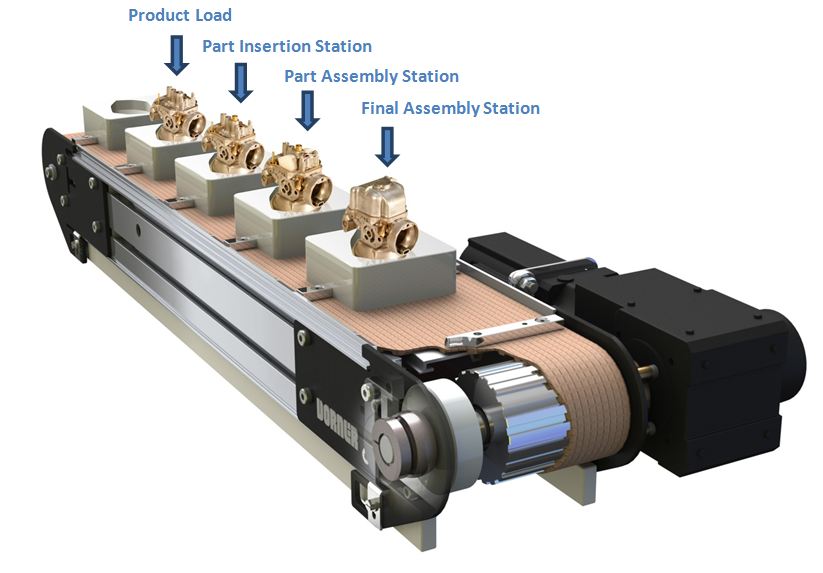
Image credit: Dorner Mfg.
Also referred to as synchronous or toothed belts, timing belts have toothed surfaces that engage with matching, toothed pulleys. This positive engagement between belt and pulley, together with pre-tension (force applied to the belt in the direction of motion) eliminates the problem of belt slipping. And timing belt conveyors typically use belts that are reinforced with steel or Kevlar tensile cords to provide increased load carrying capability and enable high acceleration rates (which result in high forces on the belt) without causing the belt to stretch.
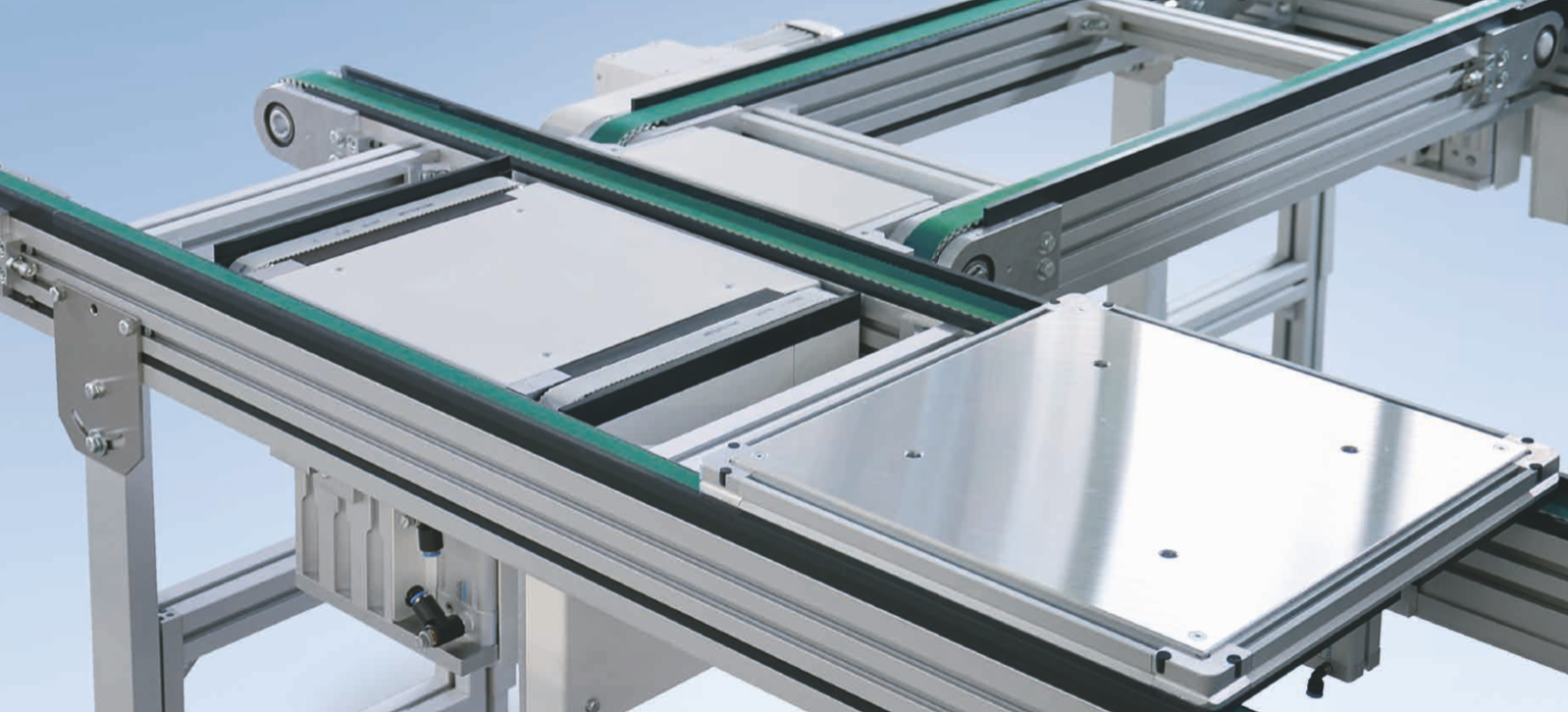
Image credit: mk North America
To improve grip, the top (carrier) side of the belt can be coated to increase friction between the product and the belt surface and reduce the possibility of the product slipping on the belt. Belt and pulley materials and finishes can also be selected to meet specific application requirements and environmental conditions, such as ESD-compatible, food-grade, or clean environments.
When application requirements call for a very accurate product location with no loss of position, cleats or fixtures can be attached to the belt carrier surface to hold the product in a specific location and with the correct orientation.
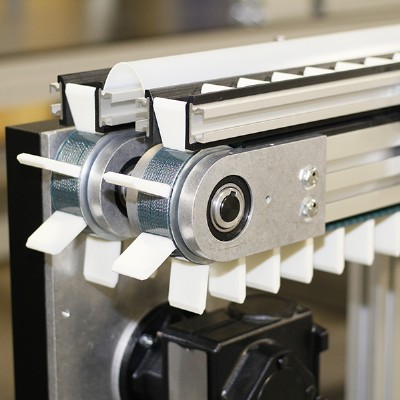
Image credit: mk North America
Another option to ensure precise location and orientation is to transport the product on a pallet. Locating the product on a fixed pallet, together with the accurate, no-slip conveying of the timing belt, provides the highest level of position accuracy and certainty.
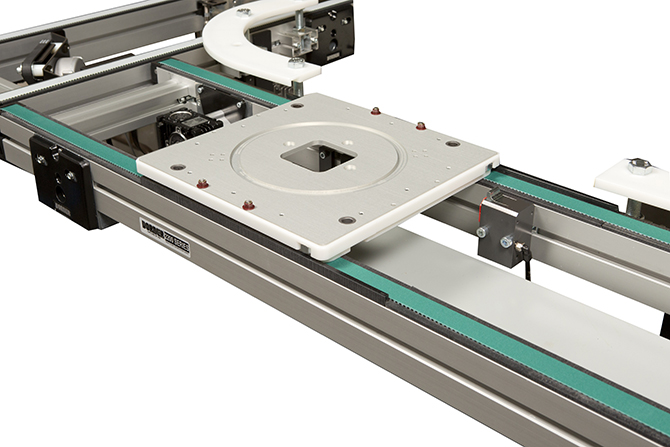
Image credit: Dorner Mfg.
A further benefit of timing belt conveyors is that the movements — and, therefore, the products being carried — of multiple conveyors can be synchronized. This makes timing belt designs ideal for dual- or multiple-line configurations and allows large, heavy loads to be transported, even when accurate positioning is required.
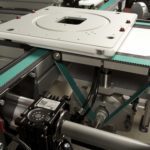
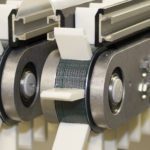
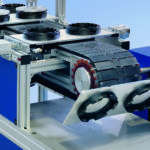
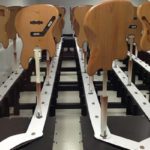

Leave a Reply
You must be logged in to post a comment.